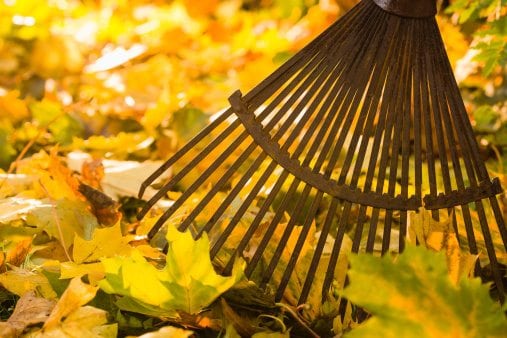Wendy Nichols, a Hartford HealthCare Rehabilitation Network physical therapist, answered these questions for a recent article in The Hartford Courant:
Q: Everyone is aware that, during winter and snow months, people need to be careful of overexerting themselves while shoveling. But what about raking and leaf removal in the fall? Is there an increase of back strains, arm strain, injuries, etc., as people are getting rid of their leaves?
A: We tend to see overuse shoulder injuries during leaf-removal season as well as some upper- and lower-back issues from dragging the leaves through the yards and bending to put leaves into bags.
Q: What’s the best way to prevent injuries when during your yard work, leaf removal?
A: The best way to prevent injuries is to take frequent breaks to avoid fatigue and to use good body mechanics. When we get fatigued we tend to overuse our muscles and our form breaks down putting more strain on our bodies.
Q: Best way to rake to avoid muscle strains and injuries?
A: First, use the power of your arms and legs to pull the rake, while minimizing how much your back moves.
When holding the rake, place one hand at the top of the handle and the other hand down the handle far enough so that your elbow bends just slightly. This way, you can stand up as straight as possible and only use your arms and legs to rake. Do not reach so far away with the rake that it forces you to bend your back.
In addition, excessive twisting must be avoided. A good hint is to step to the side as you rake, allowing your stronger leg muscles to take up much of the stress. When bagging leaves, remember to avoid bending over at the waist. Kneeling down onto one knee or even sitting on the ground can be helpful in reducing stress on the lower back. Whenever possible, rest the weight of your upper torso on your thigh through your elbow and forearm, so that your back muscles do not have to work as hard. You can also use a foam knee pad to kneel on, alternating which knee takes the pressure. If you rake your leaves onto a tarp to then be dragged to the curb side, be sure to avoid rounding your back. Instead, squat down slightly and lock your lower back into an inward curve, known as a lordosis.
You can then pull your tarp while walking forwards or backwards. Also, be mindful of your own physical limitations as well. Even the biggest and strongest among us have a limit to what can safely be done in one load. Consider asking a spouse or neighbor for help, or simply resign yourself to doing a few extra, but lighter, loads.
When you lift the bag of leaves, use the same kneeling technique (on one knee). Be sure to keep the bag close to you. Keeping your back locked inward (that lordosis again), shift your weight onto the forward leg and stand up slowly.
Q: Any method of leaf removal that’s least likely to cause injuries?
A: Any method can be least likely to cause injuries if the method is performed correctly as described above.
Q: What are the most common injuries you see from leaf removal or yard work-related activities?
A: Most common injuries are lower and upper back pain. The next most common injuries we see are overuse injuries of the shoulder and elbow.
Q: Any overall advice?
A: Be sure not to hold your breath while raking or during any outdoor activity. Inhale and exhale normally. This is especially important during lifting of the bag.
Switch hands with the rake every two to three minutes. This way you will not place excessive stress onto one side of the trunk or arms.
Take several short breaks during raking to do some gentle back bends. This will help counteract the forces placed on your low back.
Remember that the leaves are not going anywhere. If you get tired or achy while raking, stop and rest. If you listen to the signals your body sends you, you are much more apt to avoid an unnecessary injury.
Already in need of rehabilitation services? Contact the Hartford HealthCare Rehabilitation Network at 860.696.2500.

